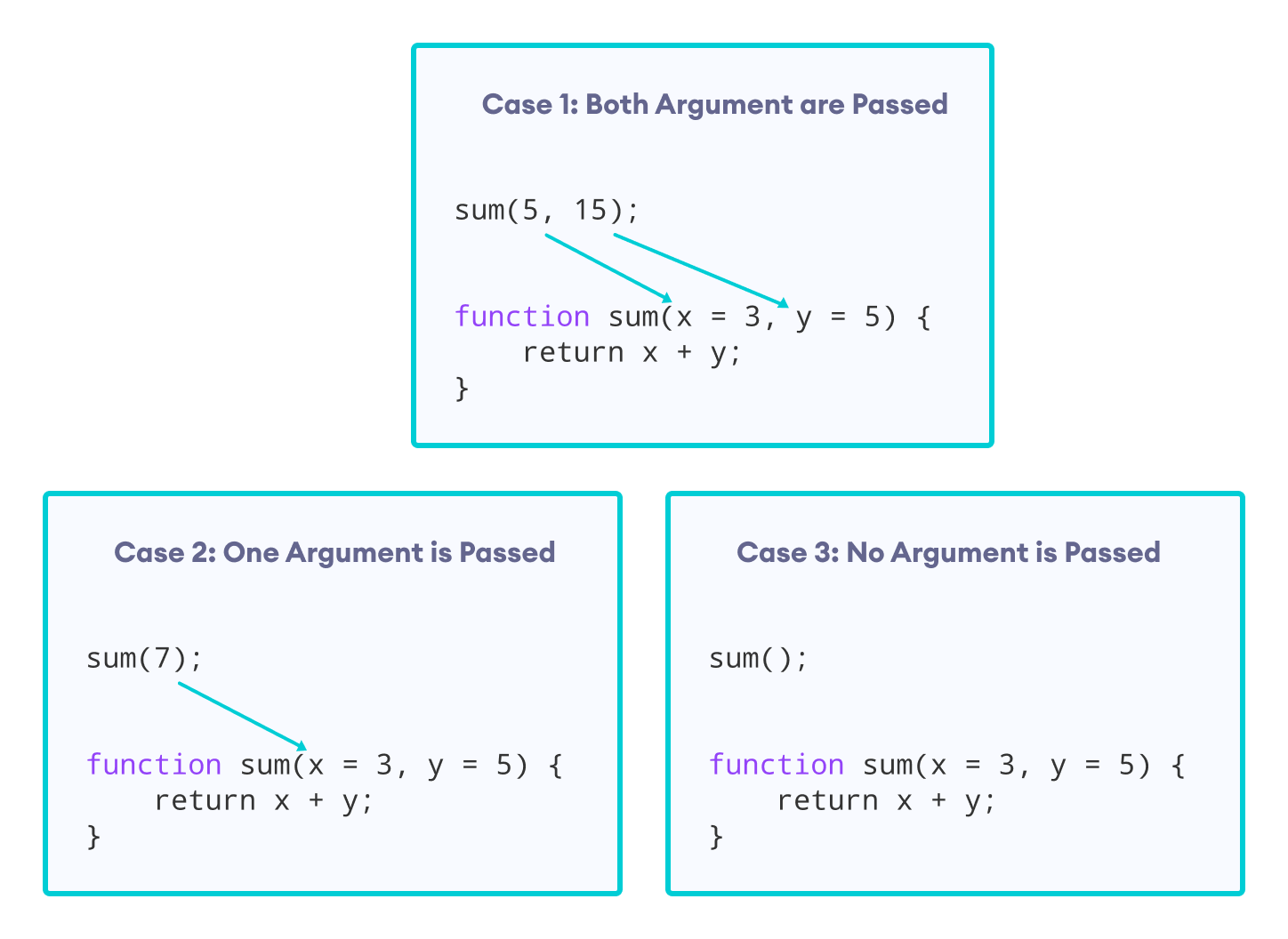The concept of default parameters is a new feature introduced in the ES6 version of JavaScript. This allows us to give default values to function parameters. Let's take an example,
function sum(x = 3, y = 5) {
// return sum
return x + y;
}
console.log(sum(5, 15)); // 20
console.log(sum(7)); // 12
console.log(sum()); // 8
In the above example, the default value of x is 3 and the default value of y is 5.
sum(5, 15)- When both arguments are passed,xtakes 5 andytakes 15.sum(7)- When 7 is passed to thesum()function,xtakes 7 andytakes default value 5.sum()- When no argument is passed to the sum() function,xtakes default value 3 andytakes default value 5.

Using Expressions as Default Values
It is also possible to provide expressions as default values.
Example 1: Passing Parameter as Default Values
function sum(x = 1, y = x, z = x + y) {
console.log( x + y + z );
}
sum(); // 4
In the above program,
- The default value of
xis 1 - The default value of
yis set toxparameter - The default value of
zis the sum ofxandy
If you reference the parameter that has not been initialized yet, you will get an error. For example,
function sum( x = y, y = 1 ) {
console.log( x + y);
}
sum();
Output
ReferenceError: Cannot access 'y' before initialization
Example 2: Passing Function Value as Default Value
// using a function in default value expression
const sum = () => 15;
const calculate = function( x, y = x * sum() ) {
return x + y;
}
const result = calculate(10);
console.log(result); // 160
In the above program,
- 10 is passed to the
calculate()function. xbecomes10, andybecomes150(the sum function returns15).- The result will be
160.
Passing undefined Value
In JavaScript, when you pass undefined to a default parameter function, the function takes the default value. For example,
function test(x = 1) {
console.log(x);
}
// passing undefined
// takes default value 1
test(undefined); // 1